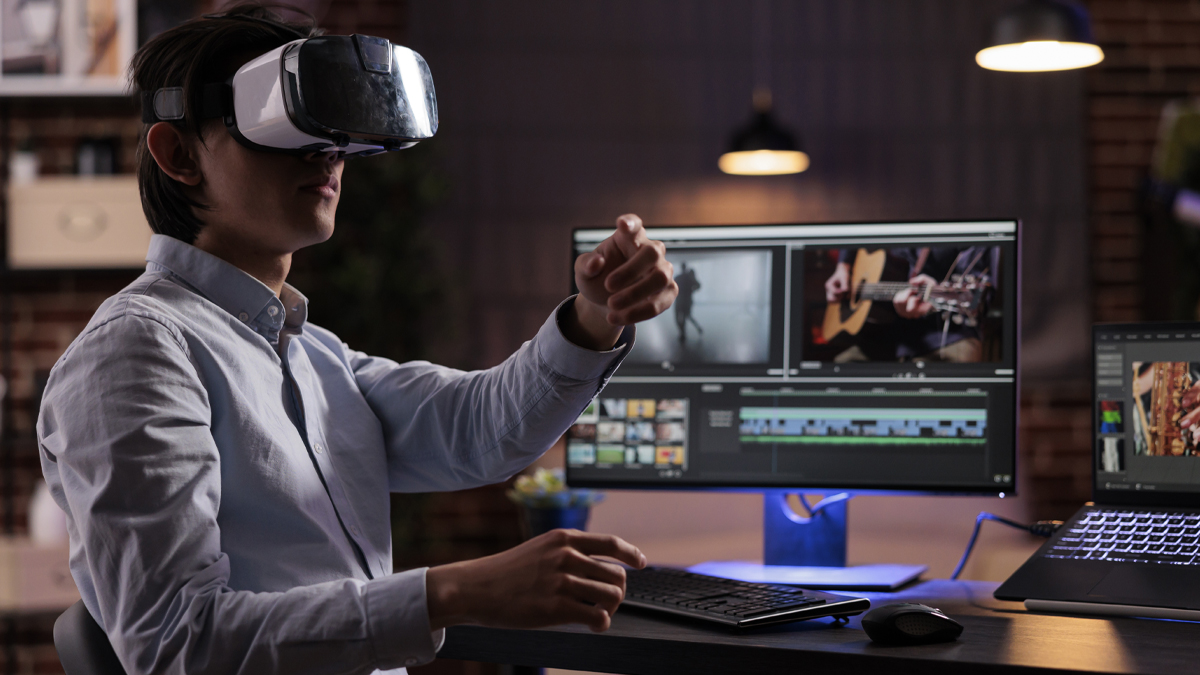Virtual production has reshaped the filmmaking landscape by blending live-action footage with computer-generated content in unprecedented ways. From its early days of optical compositing to real-time LED volumes, this hybrid approach streamlines creative workflows and empowers storytellers to visualize complex scenes on set. The Evolution of Virtual Production reflects a journey fueled by technological breakthroughs, collaborative artistry, and relentless innovation. By tracing its origins, current state, and future horizons, this article examines how virtual production is transforming cinema and setting new standards for immersive storytelling.
| Table of Contents | |
|---|---|
| I. | Origins of Virtual Production: From Optical Compositing to Digital Intermediates |
| II. | Previsualization and the Rise of the Virtual Art Department |
| III. | Real-Time Engines as Game-Changers |
| IV. | In-Camera VFX and LED Volume Stages |
| V. | Precision Camera and Motion Tracking Integration |
| VI. | Volumetric Capture and 3D Performance |
| VII. | AI-Driven Asset Generation and Scene Augmentation |
| VIII. | Real-Time Compositing and Color Pipeline Harmonization |
| IX. | Distributed, Cloud-Native Virtual Production Workflows |
| X. | Future Frontiers: XR, the Metaverse, and Beyond |
Origins of Virtual Production: From Optical Compositing to Digital Intermediates
In the early days, filmmakers relied on optical compositing to layer live-action elements over background plates. This labor-intensive process gave way to digital intermediates in the 1990s, enabling precise color grading and compositing in post-production. The Evolution of Virtual Production has its roots in these foundational techniques, which bridged physical and digital realms long before real-time workflows emerged. By standardizing digital film scans and automated color pipelines, studios laid the groundwork for today’s seamless on-set integrations.
Previsualization and the Rise of the Virtual Art Department
Previsualization tools allowed directors and cinematographers to sketch complex sequences as 3D animations before stepping on set. These digital storyboards evolved into Virtual Art Departments, where artists collaborate in shared virtual spaces to refine camera angles, lighting, and set design in real time. By simulating environments, previsualization reduces costly reshoots and accelerates decision-making. This shift has given production teams the confidence to explore ambitious shots, laying the foundation for more integrated virtual production workflows without waiting for physical builds.
Real-Time Engines as Game-Changers
The adoption of real-time game engines like Unreal and Unity revolutionized filmmaking by delivering instantaneous visual feedback on set. These platforms support dynamic lighting, physics simulations, and interactive camera movement, enabling creative teams to iterate scenes rapidly. The Evolution of Virtual Production now hinges on these engines, which power LED volumes and on-set compositing tools. By bridging gaming and film pipelines, studios can pre-render high-fidelity environments, dramatically reducing turnaround times and empowering directors with live previews of complex virtual worlds.
In-Camera VFX and LED Volume Stages
In-camera visual effects leverage LED volume stages to project real-time backgrounds that move with live-action cameras. This technology replaces green screens, offering natural lighting and reflections that integrate with actors and practical props. Directors gain more control over visual outcomes, while actors benefit from immersive environments. LED volumes also streamline post-production by capturing complex composites in a single take. As lighting and pixel resolution improve, in-camera VFX continues to close the gap between virtual and practical filmmaking techniques.
Precision Camera and Motion Tracking Integration
Advanced camera tracking systems synchronize physical camera movements with virtual environments via markers, sensors, and encoded lens metadata. This precise alignment ensures that digital assets respond accurately to camera shifts and focus pulls. The Evolution of Virtual Production relies on this tight integration, as it guarantees seamless blending of live-action and computer-generated elements. By leveraging real-time tracking data, filmmakers can capture complex choreographies, dynamic perspectives, and interactive effects on set, reducing reliance on extensive post-production adjustments and preserving the director’s creative intent throughout the process.
Volumetric Capture and 3D Performance
Volumetric capture records performers and objects in three dimensions by using multiple synchronized cameras to create detailed point clouds or mesh representations. This technique captures authentic human movements, facial expressions, and textures for full 3D reconstruction. When integrated into virtual production pipelines, volumetric data enables directors to place realistic characters into digital environments with natural depth and parallax. As capture rigs become more portable and cost-effective, volumetric performance promises to unlock new levels of immersion and emotional resonance in virtual filmmaking.
AI-Driven Asset Generation and Scene Augmentation
Artificial intelligence tools now assist with generating detailed 3D models, textures, and background assets from simple inputs or sketches. These algorithms can rapidly fill digital environments with vegetation, architectural elements, or crowd simulations. The Evolution of Virtual Production benefits from AI-driven workflows that automate repetitive tasks, allowing artists to focus on creative refinement. AI can also suggest lighting setups and camera placements based on scene context, further accelerating previsualization and on-set adjustments. As machine learning models advance, AI will play a central role in scaling cinematic world-building.
Real-Time Compositing and Color Pipeline Harmonization
Real-time compositing systems merge live feeds with virtual backdrops instantaneously, adjusting masks, keying, and reflections on the fly. Coupled with color pipeline harmonization, this approach ensures consistent color grading across camera originals, LED plates, and CG elements. By unifying color spaces and LUTs, teams maintain visual continuity between virtual and practical shots. This integrated pipeline reduces the risk of mismatched frames and accelerates final delivery. As high-dynamic-range capture becomes standard, real-time compositing will continue to evolve for more accurate and efficient color workflows.
Distributed, Cloud-Native Virtual Production Workflows
Cloud-based platforms enable geographically dispersed teams to collaborate on virtual production in real time, sharing assets, scene edits, and render outputs effortlessly. By leveraging scalable compute resources, studios can render complex environments on demand without hefty local hardware investments. Version control systems maintain asset integrity, while secure streaming protocols deliver high-resolution previews to remote editors and VFX artists. This distributed model also supports parallel workflows, reducing bottlenecks and accelerating project timelines. As cloud technologies mature, virtual production will become increasingly agile and accessible to smaller independent creators.
Future Frontiers: XR, the Metaverse, and Beyond
Extended reality (XR) blends augmented and virtual realities to create immersive storytelling experiences that transcend traditional cinema screens. In the metaverse, audiences may explore narrative worlds interactively, choosing perspectives and influencing outcomes. Holographic displays, spatial audio, and tactile feedback promise multisensory engagement. Beyond entertainment, these technologies offer novel training, education, and marketing applications. As virtual production continues to advance, the convergence of XR and cinema will redefine audience expectations, fostering entirely new forms of interactive and participatory storytelling in a digitally interconnected landscape.

